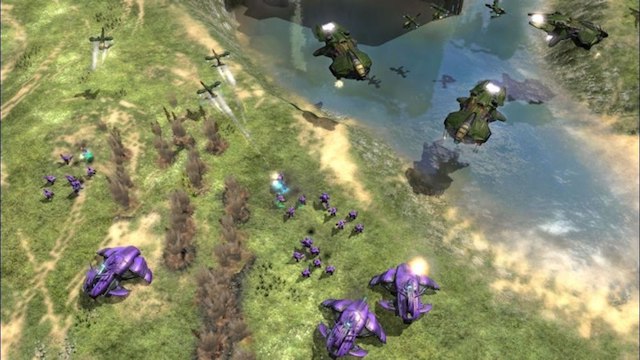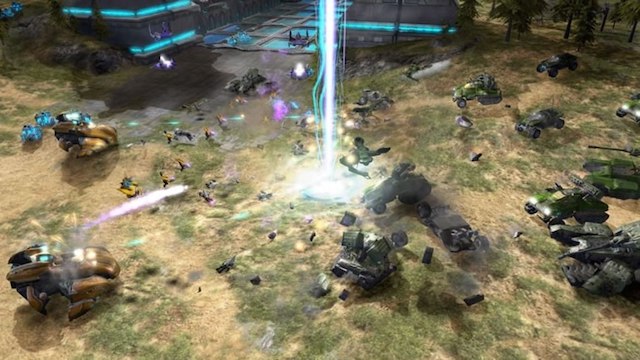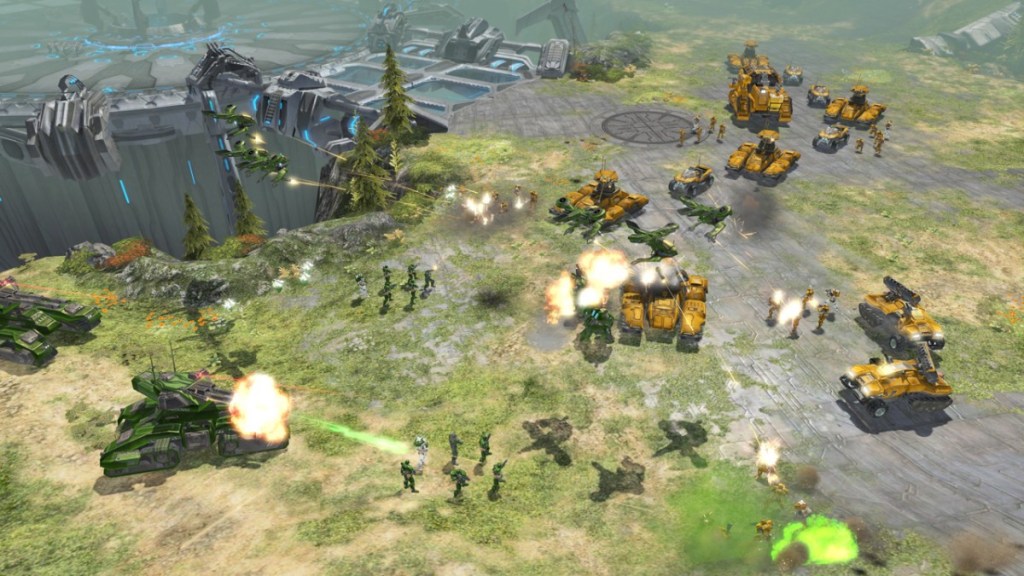When Halo Wars was unveiled in 2006, there was plenty of skepticism surrounding the spin-off. Not only did fans fear that Microsoft would begin milking the Halo series, but years of mediocre and terrible real-time strategy games seemingly showed that the genre wasn’t a fit for home consoles. However, all of these worries were laid to rest after it released in early 2009. Developer Ensemble Studios’ dedication to the source material and making sure it was specifically developed for consoles, made it not only live up to the Halo name but one of the best RTS games to ever be released; an unthinkable feat that is still impressive today.
It may have seemed odd to turn Bungie’s beloved first-person shooter franchise into a strategy game, but it made sense when looking at the greater Halo universe. After all, while many of the shooters are about Master Chief heroically mowing down hundreds of Covenant soldiers at a time, fierce wars were taking place at the same time, which saw the humans making a coordinated effort to finish the fight. Bungie didn’t just create a shooter, but an entire sci-fi universe that was waiting to be explored and expanded upon by the right hands. Ensemble Studios was clearly up to the task and managed to do just that.
Microsoft helped by always trying to ensure that it went beyond just gaming and into other forms of entertainment. From well-regarded novels like Halo: The Fall of Reach to seven short films by some of Japan’s top anime studios and a live-action web series, Halo has been a series that took place on multiple mediums similar to Star Trek, which has over 50 years of tie-in fiction. This didn’t only serve to flesh out many elements that hardcore fans were dying to know about but also set the stage for spin-off games since people slowly became OK with experiencing Halo in ways beyond just shooters.
Familiar elements returning in a new way

One of the biggest reasons for Halo Wars‘ success and positive reception from both fans and critics alike was that they didn’t just take another RTS title and just slap the Halo name on it. Every aspect from the unit types to their special moves were designed around the series itself. An example is that fans loved to simply run over enemies while driving the Warthog, so naturally, they made it so that its special ability was to do exactly that. Clearly the team at Ensemble Studios were fans of the series before working on the spin-off and they knew exactly what elements to use.
Beyond that, the Halo universe naturally lends itself to a real-time strategy game. After all, this is a series filled with a huge amount of enemy variety, awesome vehicles that both humans and the Covenant use, and cool planets that are a perfect backdrop for warfare. Nothing included in Halo Wars felt like a stretch or bad use of the license.
Everything was believable from within what players had already seen in the previous games and that was a key factor in how well the project came together. It also allowed players to view the universe from a different perspective and live out a new type of fantasy where they commanded a series of Wolverine vehicles and Spartan warriors rather than controlling one.
Other than Ensemble Studios carefully making every part of the gameplay was authentic to the universe, familiar features such as Skulls also returned. These hidden easter eggs, that only spawn into a level once a kill requirement is met, aren’t just fun to collect but also allow the player to customize their experience.
Familiar gags such as having grunts explode into confetti and challenging additions like the Fog Skull (which removed the motion tracker in several of the shooters and got rid of the minimap in Halo Wars) returned. It shows that even the smaller aspects of Halo — the ones that only the most hardcore fans appreciate — were being faithfully represented despite the change in genre.
Making the story matter

One other major advantage that Halo Wars had over a lot of spin-offs was that it told a meaningful story that players cared about. By taking place nearly 20 years prior to the events of Halo: Combat Evolved, it was the first time that players got to go into the past of Halo‘s world in a game. While not taking place at the very beginning of the conflict between humans and the Covenant, it still managed to show the early years of the lengthy battle for humanity’s survival, while also telling its own self-contained story with plenty of familiar elements such as getting help from a smart artificial intelligence.
The campaign also modeled itself after Halo games in that it got away from the standard RTS structure of long hour-plus missions. Instead, the game had a flow to the story as there were shorter missions thrown in with the lengthier ones that players had come to expect from the genre. This variety was a welcome addition as time-based missions and more cinematic levels helped keep things fresh. Players also had plenty of reason to replay stages since it retained the medals system seen in prior Halo games that rewarded varied play styles and mastering the mechanics.
Looking back at Halo Wars 10 years after it released, it’s easy to recognize just how much of a passion project it was for Ensemble Studios. Not only did the studio create a great real-time strategy game, but it also managed to further the Halo series itself in exciting new ways while also staying true to the source material every step of the way. It’s a high mark, but it is one that every single developer of a spin-off should be trying to reach. It’s exactly why Halo Wars is still beloved a decade later while many diversions in a franchise are largely forgotten after they come out.







